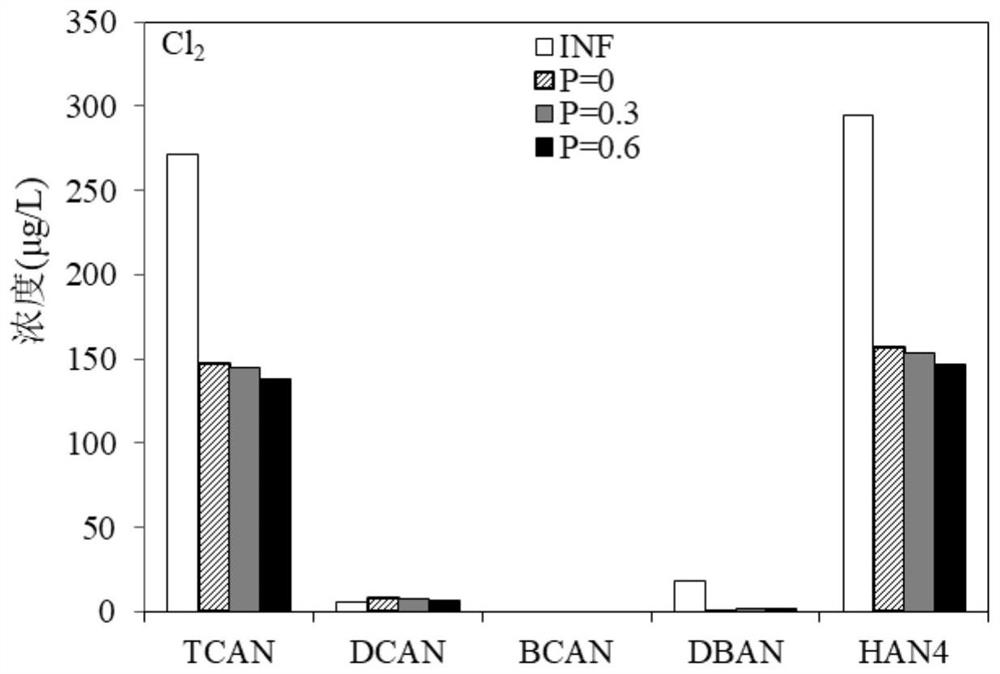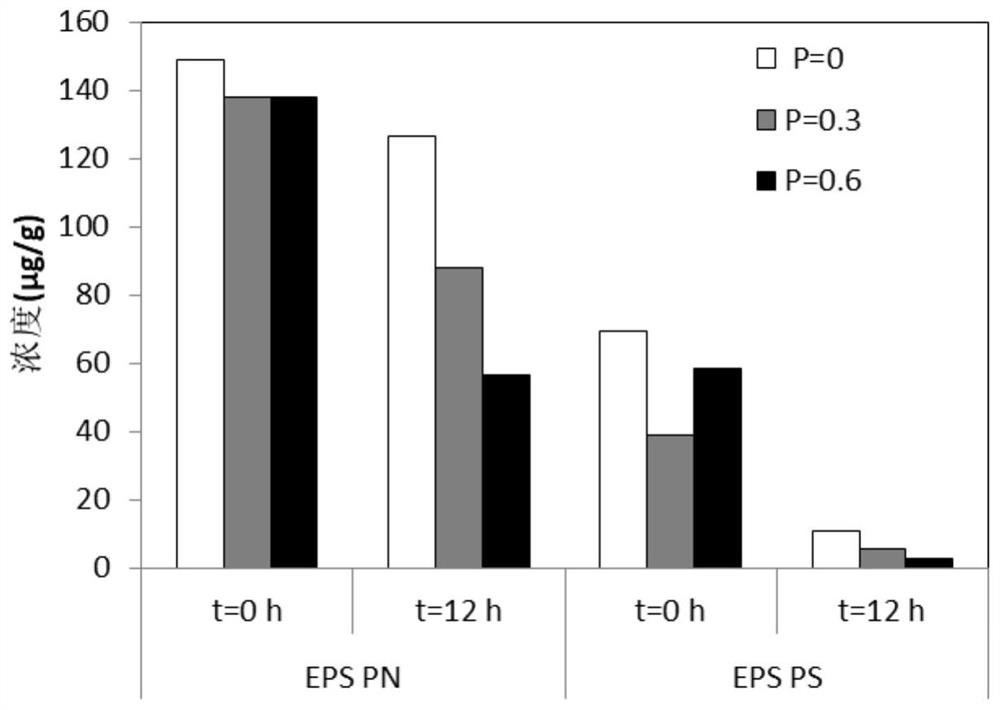Method and experimental method for controlling haloacetonitrile by using phosphate-reinforced biological activated carbon
A technology of biological activated carbon and experimental method, which is applied in the field of phosphate-enhanced biological activated carbon to control haloacetonitrile, can solve the problems of high N-DBPs, etc., and achieve the effects of promoting removal, avoiding phosphorus pollution, and small dosage
- Summary
- Abstract
- Description
- Claims
- Application Information
AI Technical Summary
Problems solved by technology
Method used
Image
Examples
Embodiment Construction
[0036] The following descriptions are only preferred embodiments of the present invention, and do not limit the protection scope of the present invention. The present invention will be further described below in conjunction with the accompanying drawings and embodiments.
[0037] Examples, see Figure 1 to Figure 4 Shown:
[0038] A method for controlling haloacetonitrile with phosphate enhanced biological activated carbon, comprising the steps of:
[0039] S1: Add river water to the biological activated carbon filter.
[0040] S2: Add disodium hydrogen phosphate solution into the biological activated carbon filter, stir evenly, and react in the dark for 12 hours.
[0041] Wherein, as the first embodiment of the dosing concentration of the disodium hydrogen phosphate solution, the dosing concentration of the disodium hydrogen phosphate solution is 0.3 mg / L. Since the river water itself contains certain phosphate radicals, phosphoric acid is added in the biological activated ...
PUM
 Login to View More
Login to View More Abstract
Description
Claims
Application Information
 Login to View More
Login to View More - R&D
- Intellectual Property
- Life Sciences
- Materials
- Tech Scout
- Unparalleled Data Quality
- Higher Quality Content
- 60% Fewer Hallucinations
Browse by: Latest US Patents, China's latest patents, Technical Efficacy Thesaurus, Application Domain, Technology Topic, Popular Technical Reports.
© 2025 PatSnap. All rights reserved.Legal|Privacy policy|Modern Slavery Act Transparency Statement|Sitemap|About US| Contact US: help@patsnap.com



